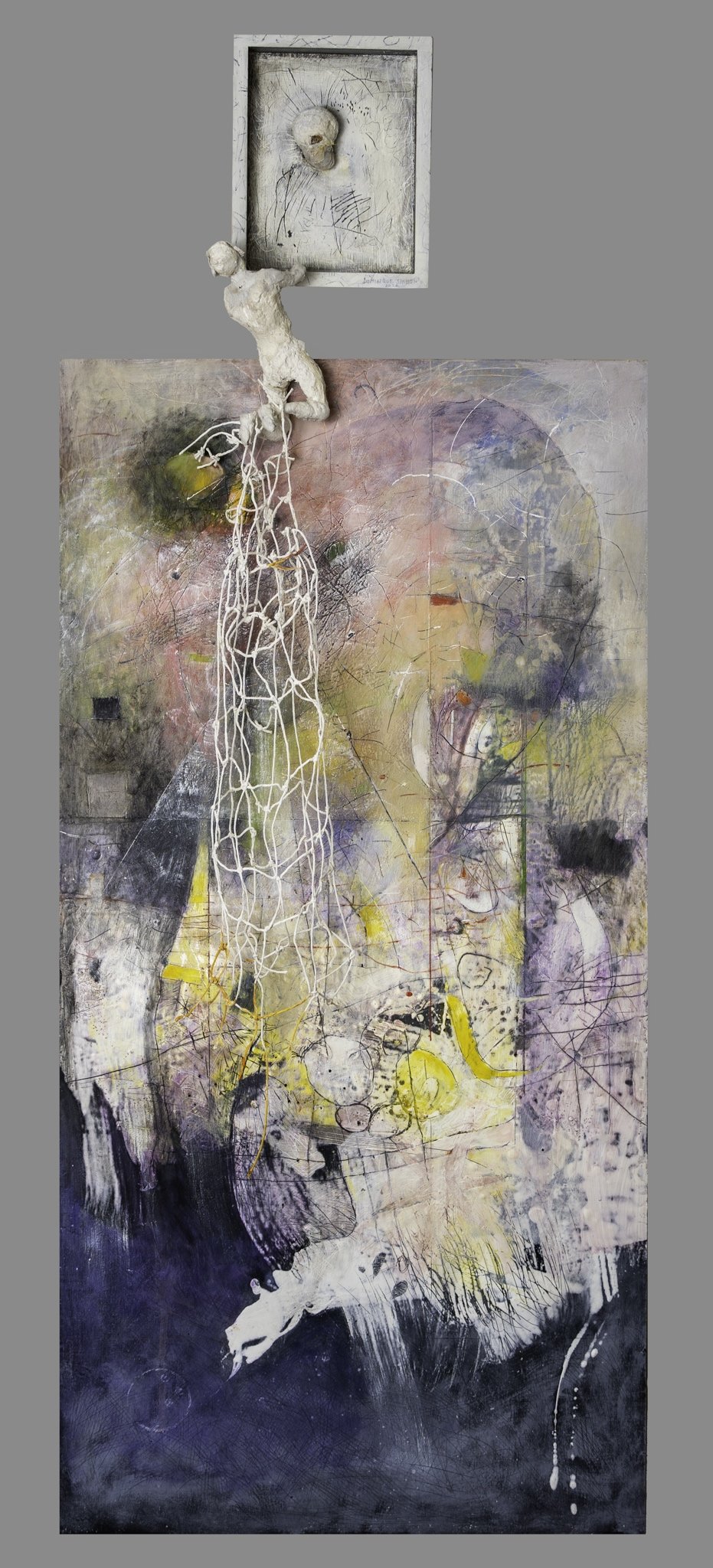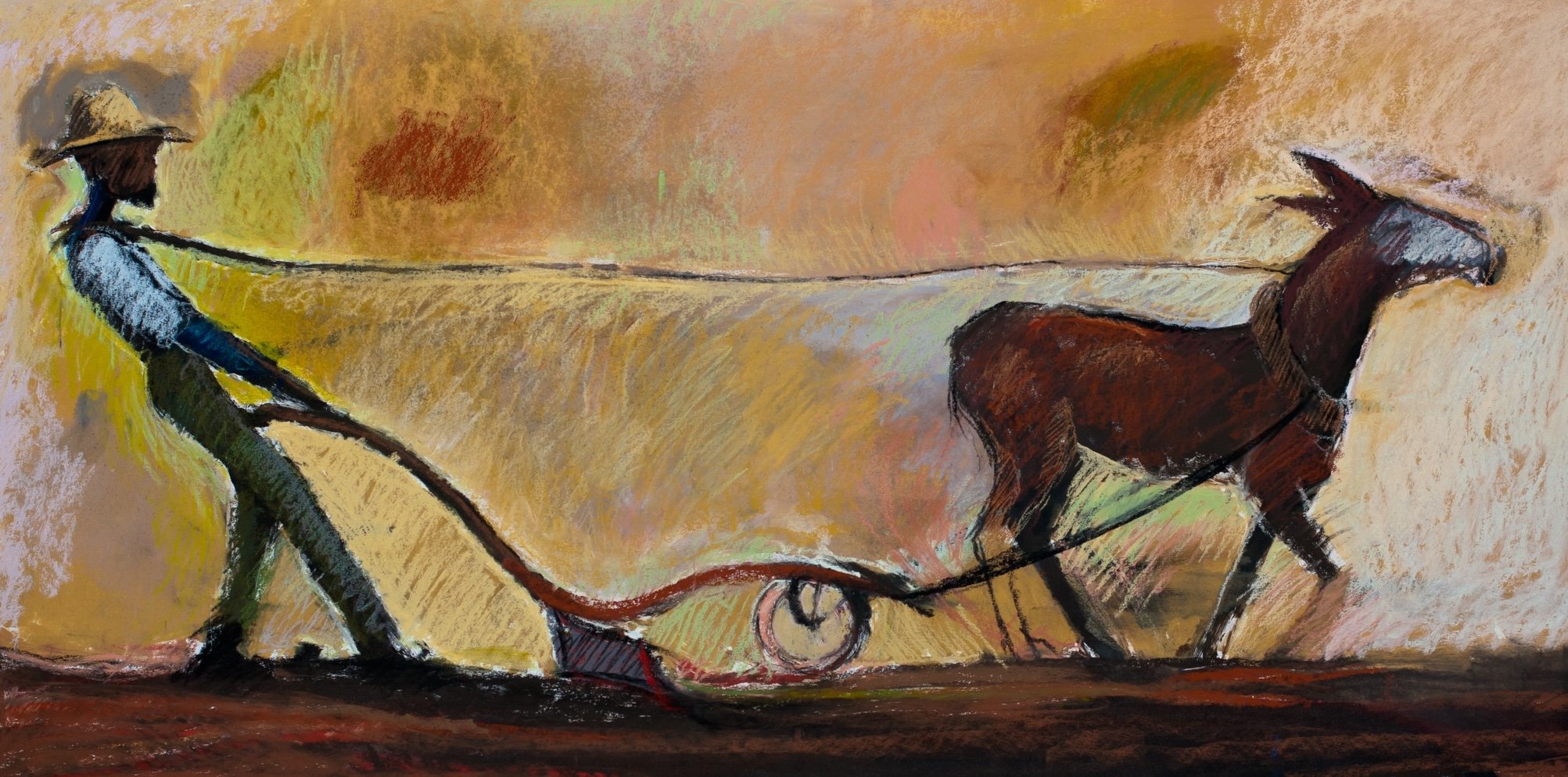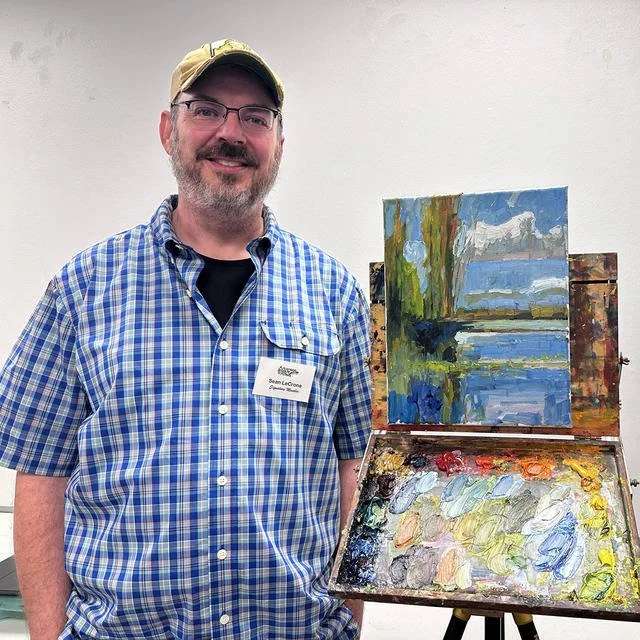Interview with artist Dominique Simmons
Dominique Simmons is a Little Rock printmaker, painter, and sculptor. Her work is mostly figurative and narrative, sometimes depicting good versus evil and sometimes dark and foreboding. But her work is always smart – and captivating because of what she calls her energetic mark. More of Dominique’s work can be found at her website dominiquesimmonsart.com.

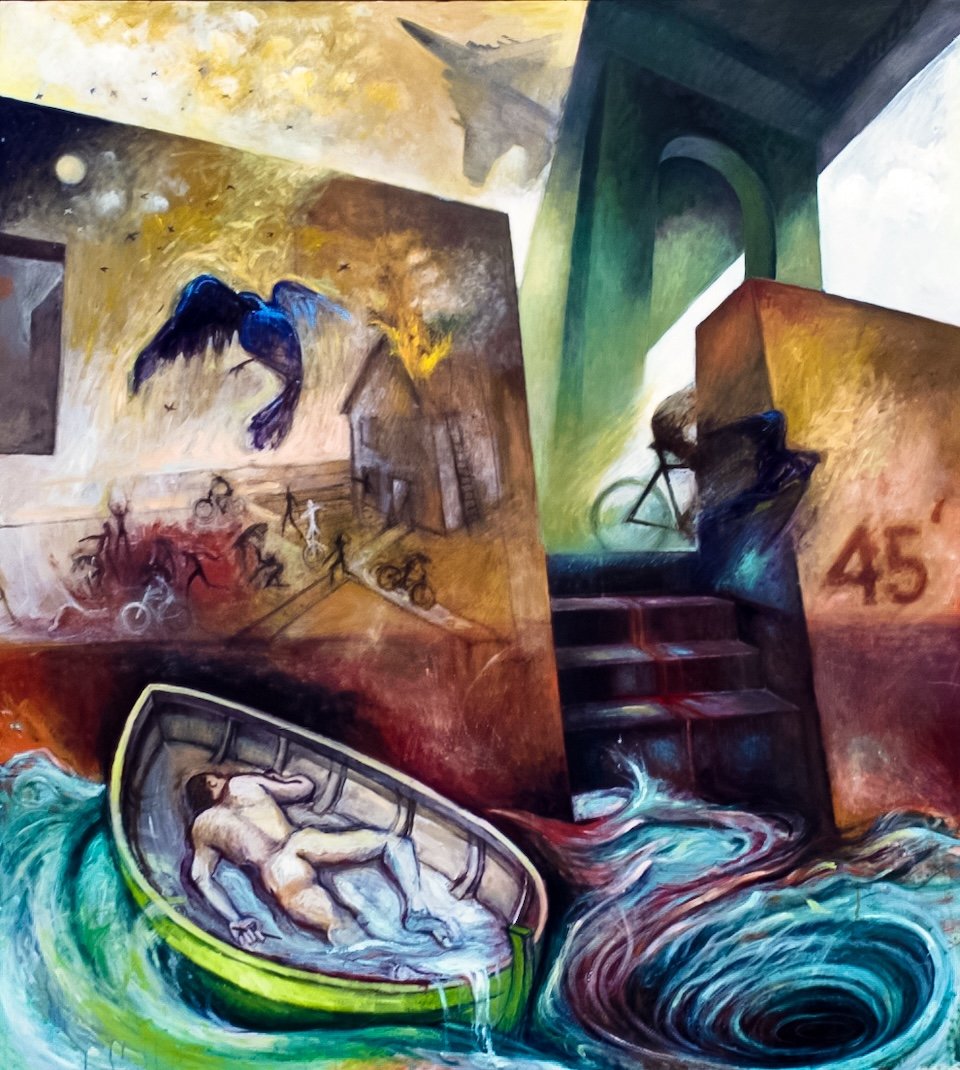

AAS: Dominique, were you raised in Little Rock?
DS: I was born in Fayetteville and grew up in Fort Smith. My Dad was in his last year at the University as an art student when I was born. Both my parents have their roots in northwest Arkansas. I attended a Catholic school until the fifth grade and public school after that. My father, a self-professed heathen sent us to catholic school because he thought the education might be better. The most interesting part of my education there was attending mass every day, which at the time was in Latin. All the statuary, Christ with the thorns, the bloody crucifixes, the incense, the stations of the cross, the dim light and candles, I know set the stage for how my imagery evolved.
I attended Westark Community College in Fort Smith, where my father taught art for before I transferred to Arkansas State to study printmaking with Evan Lindquist. I met my husband there and after earning my BFA I followed my husband Robert to Germany for three years where he fulfilled military duties. While there I took a job as manager of the military arts and crafts facility at the Nellingen Army Airfield. What a great time!
After Germany there was a stint in California for my husband and then we came back to live in Arkansas. We chose Little Rock because employment opportunities were better than Fort Smith. We bought a condemned house on Gaines Street (at $16,000 dollars it was overpriced), where we did as much of the renovation as we knew how and learned how to do a lot more. No plumbing, ancient wiring, three layers of shingles, peeling paint, missing windows, and the former owner’s dentures in the bathroom sink among other interesting detritus. We could write a book about our experience in this house. We moved in a year and half later with the city still listing it as conditionally condemned. The series I did on house imagery and carpenters came from this experience.
While renovating the house, I also went back to school to pursue a graduate degree at UALR. I then worked at the gallery there for two years. From 1993 until 2003 I had a very satisfying tenure teaching at the Arkansas Arts Center. After that I had an adjunct position at the University in Little Rock until 2013.
AAS: Who are some of the people who have had the biggest influence on you becoming the artist you are today?
DS. Well, my father, James Howard of course. He did paintings of musicians and I have as well. I did a lot a banjo players early in my career because he did. Don Lee at Westark Community College (now University of Arkansas at Fort Smith) taught me to paint, Evan Lindquist, the renowned printmaker at Arkansas State taught me printmaking and Kathy Holder at UALR opened my eyes to many contemporary artists. The access I had to art books as a youngster was instrumental to my development.
AAS: I know that art education is very important to you. Are you still teaching drawing and painting?
DS: At the moment I am not teaching. I occasionally volunteer to teach workshops with the Arkansas Pastel Society. I taught myself how to teach during my tenure at the Museum School at the Arkansas Arts Center. To teach there your classes had to make, so I learned the delicate balance of keeping my students happy while critiquing their work, so that they were learning the principals of design and developing a personal aesthetic. I am very proud of my tenure there.
AAS: I saw some of your incredible prints at the printmakers show at UALR in August, so I would like to ask you first about your printmaking. Your prints, like all your work, are commentaries on society, current events and address questions that are important to you. The Devil is in the Details is a foreboding image of the United States. When was it created and what story were you depicting with that image?
The Devil is in the Details, 18” x 24”, intaglio
DS: The Devil is in the Details was created in 2009-2010 and was included in the Delta exhibit at the Arkansas Arts Center I believe in 2011. It depicts a map of the United States in the shape of storm clouds hovering over a landscape. Texas and Florida are morphing into tornados and in amongst the clouds approximately at the Mississippi River there is a demon figure that you might miss if you don’t look closely. The picture speaks to the divisions that exist in our country, the oversized influence that Florida and Texas have on our elections and just the general chaos that exists in the world.
AAS: Many of your prints are intaglio. What is intaglio?
DS: Intaglio is a printing process where a metal plate is covered with an acid resistant coating. An image is incised through the coating, revealing the unprotected plate. It is then placed in an acid bath like ferric or nitric acid, where the incised line is etched. The plate is then inked so that the ink fills the incised lines. The plate is placed on the press, paper placed on the plate, and as the dampened paper is run through the press, the paper is forced into the etched lines and the image is revealed. It is really magical.
AAS: Who are some of your favorite artists and which artists do you think have had the greatest influence on your work?
DS: I am intrigued by the German artists of the early northern renaissance like Rogier van der Weyden, Hugo van der Goes and later Albrecht Durer, Pieter Bruegel and of course Hieronymus Bosch. There is an earthiness and grittiness to the Northern painters that appeals to me. Being a printmaker, I have to mention Albrecht Durer and Goya, especially Francisco Goya. His humanity just oozed out of everything he did. I love a painting by Jean-Antoine Watteau called Pierrot. It is from the Rococo period, and I usually do not like anything from that period, but there is something about this image of a young jester looking straight out at the audience that is just touching.
The more contemporary artists I enjoy looking at are Louise Bourgeois, Julie Mehretu, Kara Walker, Antoni Tapies, Joseph Beuys. Right now I am looking at Kiki Smith’s work. I really feel connected to her work concerning nature and the feminine.
AAS: I can see some of admiration of Bosch in The Immigrant. The imagery is quite complex. Tell me about that painting.
The Immigrant, 60” x 48”, acrylic on canvas
DS: Yes, it is complex picture about a complex topic. The Immigrant was painted after spending a summer in Mexico visiting my husband’s relatives in San Luis Potosi and then renting an apartment in San Miguel de Allende. The image is of a Mayan figure walking toward what I conceived to be the US, Mexican border. In his hand he holds a hammer, which signifies his willingness to work and is escorted by a coyote, the smuggler of human cargo. On the right side of the painting you see a hand extending money toward the figure while a menacing snake looks on. Below you see the figure mirrored and to the bottom right a Spanish galleon crosses the Gulf of Mexico along with a hurricane signifying the destructive aspects of colonialism. The paradox of the immigrant is that some in our country want and need the cheap labor, but do not respect the immigrant’s value as individual human beings.
AAS: The Shrike Watcher includes some of the imagery that I associate with much of your work – birds, bird houses, and tree limbs. It is such a fascinating image. What is the story behind it.
Shrike Watcher, 36” x 24”, pastel
DS: The Shrike Watcher is about coming to terms with our relationship with nature. We love nature, we find beauty in it, want to be a part of it, but also want to control it and in controlling it we destroy it. The shrike is a bird that catches insects and impales them on thorns to snack on later. The thorns that encircle and grow out of the man represent the idea that we are victims when we fail to reconcile that we are a part of nature.
AAS: In School Drill, your brush strokes really give the painting an ominous feel and sense of urgency. It is another very powerful image.
School Drill, 36” x 24”, acrylic on canvas
DS: The painting is about childhood fears, like tornados and nuclear Armageddon. It has a limited value range, and lots of marks that emphasize movement and unease. In graduate school I became proficient in gesture drawing and the figures are based on that knowledge. There are also some unicyclists in that painting, and I actually did a series of unicyclists around this time. They speak about keeping a balance in a crazy world. As long as you keep pedaling you may stay upright.
AAS: Your work is often filled with bright colors – even when the subject or narrative is dark. But I think one of my favorites is A Carpenter’s Vanitas. It is an extraordinary charcoal drawing. Tell me about it.
A Carpenter’s Vanitas, 30” x 40”, charcoal
DS: As I mentioned earlier, my husband and I are renovating a house and at some point you realize how this experience becomes an allegory for life. The carpenter is inextricably dependent on the wood, thus the tree. The house you build becomes the master, the raison d'être for your existence, but the very nails you use to build the house keep you pinned down and the tools are a weight also.
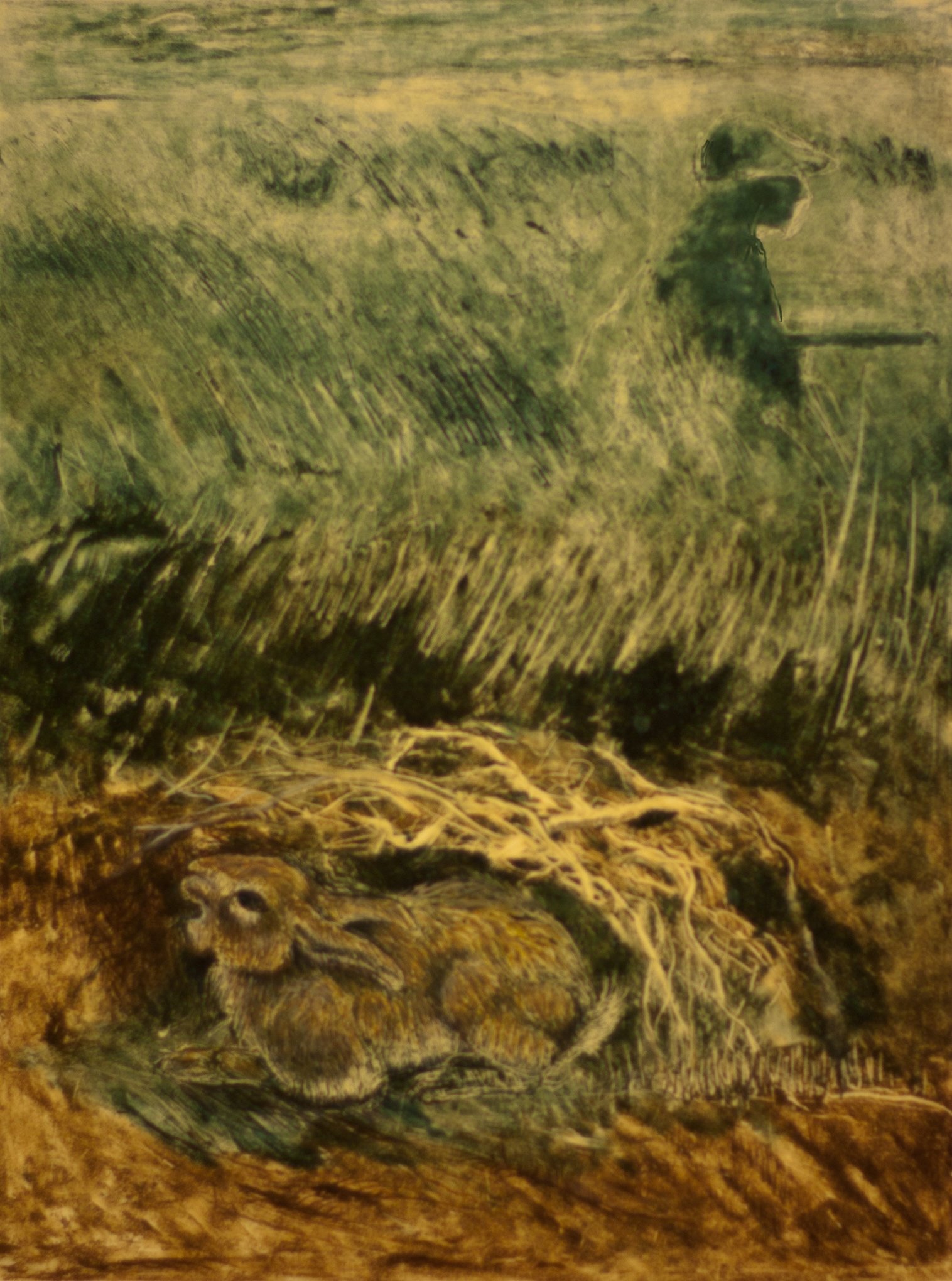

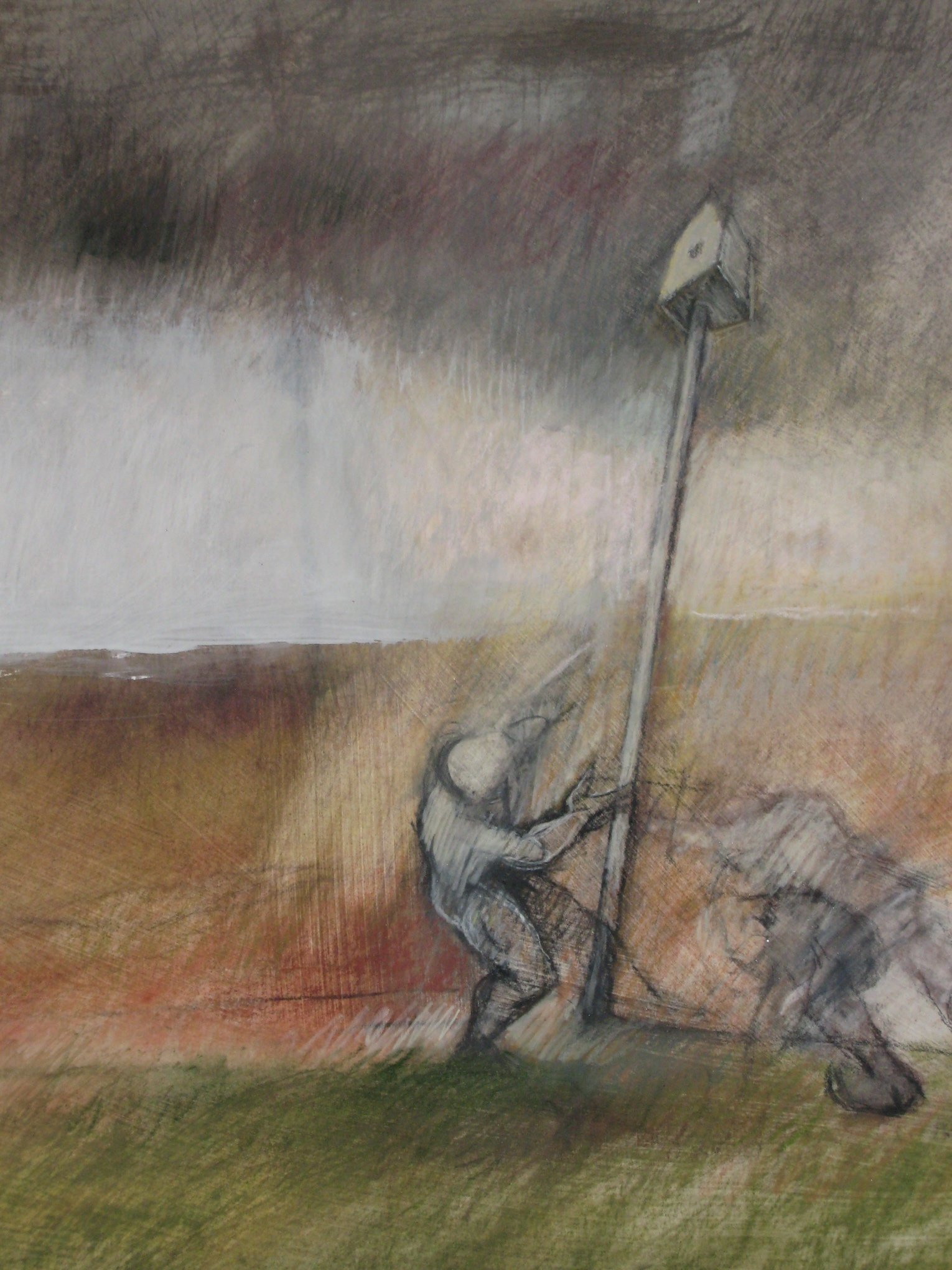
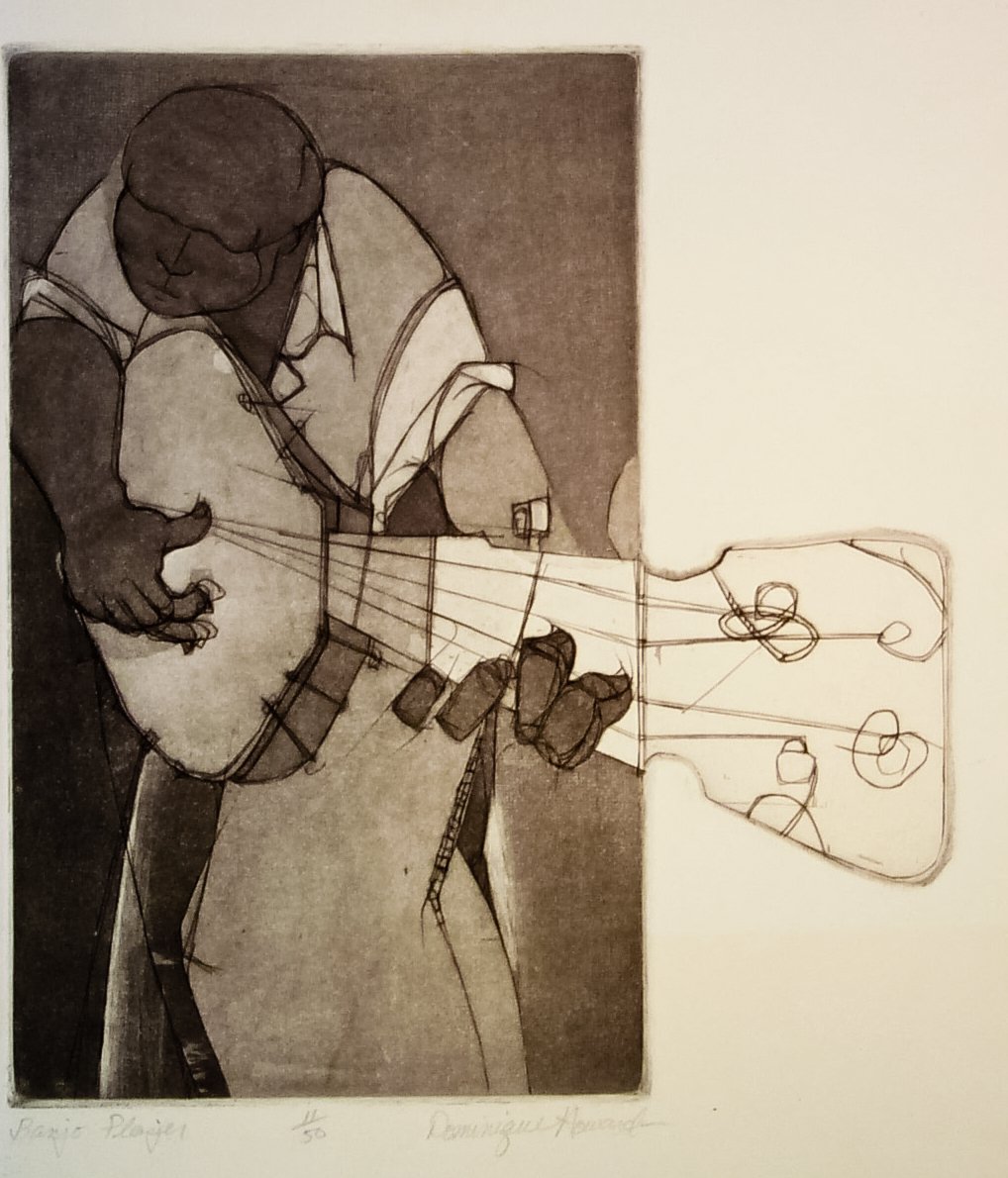
“Art is not always pretty and happy, art is not always serious, angry, and dark, but there can be a rich beauty and truth in both approaches.”
AAS: You work in many different mediums. Do you have a favorite medium or is the medium you choose for a piece solely dependent on what you want the piece to say?
DS: I find the medium that I use must serve form and content. Art is not always pretty and happy, art is not always serious, angry, and dark, but there can be a rich beauty and truth in both approaches. I like a graphic line, layers of texture and color, and an energetic mark. It’s these qualities of expression that draw me to printmaking, pastel, and charcoal. I love the pastel because of its immediacy, and I can build layers and create that energetic mark. You can do that with paint but getting that mark that I came to love with pastel is a little harder and the paint mark is different from pastel. However, paint is less fussy than pastel, it does not require the aftercare that the pastel does like matting and glass.
And of course, I love printmaking and the graphic quality of the mark. I am currently doing collagraphs because I really don’t have the facilities to use the acid to create intaglios. It's messy and I don’t have an exhaust system or a dedicated sink in my studio. My collagraphs are created by inking shaped and sewn pieces of tarlatan (basically stiffened cheesecloth). I am really excited by the results.
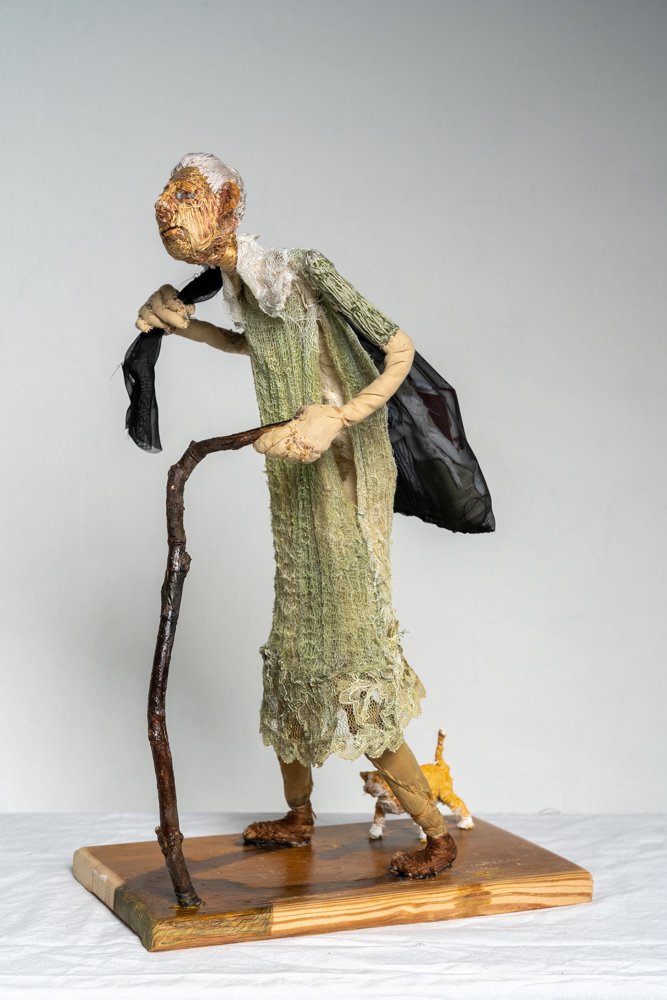

AAS: What can we expect next from you?
Tabernacle, 20” x 14”, collagraph, AAC Small Works on Paper Traveling Exhibition, 2024
DS: I have a busy year ahead. I am showing at the New Deal Gallery downtown with Catherine Nugent and Sandra Sell. The show runs from Saturday, November 4 through Thursday, November 9. I am also represented in the Arkansas Pastel Society National show, which will begin November 17 at the Laman Library in North Little Rock.
In 2024 I will be represented in the Arkansas Arts Council Small Works on Paper traveling exhibit and in June I am showing at the Historic Arkansas Museum with ceramicist Stephen Driver and weaver and fiber artist Louise Halsey. So, I have a lot to look forward to.
I am currently working on mixed media sculptures made from cloth and paper mache on wire armatures. The buildup of sewn thread is an important component of the work both formally and expressively. I will also continue to work on the calligraphic prints.

